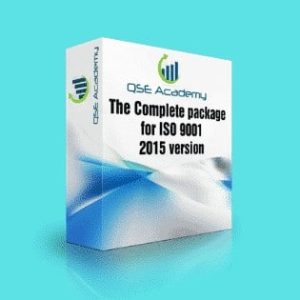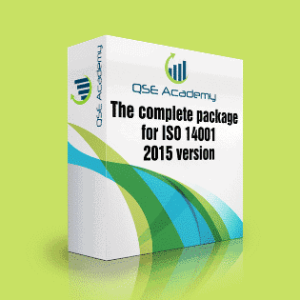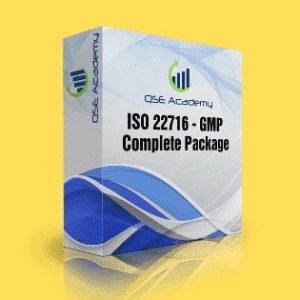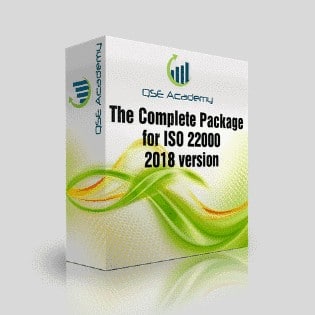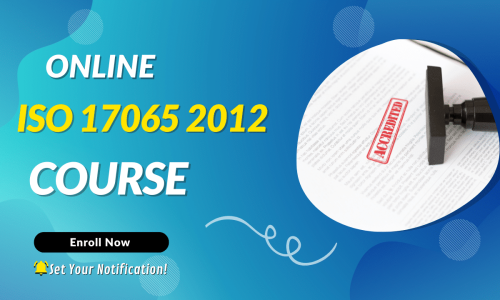Certificate of Conformance: What It Is and When You Need One
Last Updated on October 13, 2025 by Hafsa J.
Certificate of Conformance: What It Is and When You Need One
A certificate of conformance—often referred to as a CoC—is a formal document issued by a supplier or manufacturer that confirms a product or service meets specified requirements. It’s not just a piece of paper—it’s a critical part of quality assurance and customer trust. You typically need a certificate of conformance when you’re supplying regulated products, meeting contractual obligations, or proving compliance with industry standards like ISO 9001.
In this article, we’ll break down exactly what a certificate of conformance includes, how it differs from similar documents, and when it’s required. Whether you’re in aerospace, manufacturing, medical devices, or defense, knowing how and when to issue a certificate of conformance is key to staying compliant and maintaining credibility. Let’s make this simple and clear—just as your documentation should be.
Definition and Core Purpose
A certificate of conformance is a supplier’s declaration that a product or service fully meets specified requirements, regulations, or contractual obligations. It acts as formal assurance that what’s being delivered has been checked and verified internally, without the need to include lab results or inspection reports.
This document is especially useful in regulated industries, where consistency and compliance are non-negotiable. A certificate of conformance typically includes:
-
Product or batch identification
-
Applicable specifications or standards
-
Name and signature of the responsible authority
-
Date of issuance and reference numbers
By issuing a certificate of conformance, the supplier is taking full responsibility for the product’s conformity. This not only reduces the burden of duplicate testing but also supports traceability in audits and customer inspections.
Using a certificate of conformance helps build confidence in your quality system and ensures smoother transactions with clients who require documented proof of compliance.
Typical Contents of a Certificate of Conformance
A certificate of conformance generally follows a clear and standardized structure. While formats can vary slightly depending on the industry, certain elements are essential to make the document valid and traceable. Including these key points ensures the certificate of conformance is accepted by customers, inspectors, and auditors alike.
Here’s what a typical certificate of conformance includes:
-
Product identification: Part number, batch or serial number, and description.
-
Referenced standards or requirements: This could be internal specifications, contract terms, or external regulatory codes.
-
Supplier details: Company name, address, and contact information.
-
Authorized signatory: The name, title, and signature of the person validating the conformance.
-
Date of issue: Ensures traceability and relevance to the specific production or shipment.
The certificate of conformance should be clear, concise, and consistent with other supporting documentation like packing slips or shipping invoices. If these elements are missing or incomplete, the certificate may not be considered valid, potentially delaying delivery acceptance or inspection clearance.
By standardizing the format and contents of your certificate of conformance, you reduce the chances of error and make it easier for stakeholders to trust and verify your quality claims.
How to Create a Valid Certificate of Conformance
Creating a valid certificate of conformance doesn’t have to be complicated—but it must be accurate, consistent, and compliant with customer and regulatory expectations. Whether you’re a manufacturer, supplier, or service provider, here’s how to approach it clearly and effectively.
Start by making sure your certificate of conformance includes all the required components:
-
Header Information: Clearly label the document as a “Certificate of Conformance.”
-
Product or Item Details: Include name, part number, model, lot, batch, or serial number.
-
Statement of Conformity: A precise declaration that the item meets the stated requirements, such as “This certifies that the product listed above complies with the specified standards and contractual requirements.”
-
Applicable Standards or References: Clearly mention the referenced quality, safety, or regulatory standards (such as ISO, ASTM, or internal codes).
-
Supplier Identification: Include full company name, address, and contact details.
-
Authorized Signature: The name and title of the certifying representative, with a dated signature.
To streamline the process, consider using a standardized template. This reduces errors and saves time when generating certificates for multiple items or shipments. A digital system can also help manage revisions and ensure traceability.
The certificate of conformance must reflect what was actually produced or delivered. Avoid vague language, ensure the correct product information, and verify every detail before issuing it. This builds trust and ensures compliance during inspections, audits, or customer evaluations.
The Role of ISO Standards in Certificates of Conformance
ISO standards play a crucial role in shaping the structure, accuracy, and reliability of a certificate of conformance. They act as the foundation for many conformity declarations, especially when products or services must meet internationally recognized benchmarks.
When an organization issues a certificate of conformance, it often references specific ISO standards—such as ISO 9001 for quality management, ISO 13485 for medical devices, or ISO 14001 for environmental management. These references give credibility to the claim that the product or process meets defined requirements. Without this alignment, the certificate can lack the weight needed for regulatory or customer acceptance.
For example:
- If a manufacturer states that a batch of parts conforms to ISO 2768 tolerance requirements, the certificate of conformance must clearly declare this.
- A supplier of packaging material may reference compliance with ISO 11607 for sterile barrier systems.
In both cases, ISO standards ensure that everyone—supplier, customer, or regulator—has a common understanding of what “conformance” really means.
Moreover, ISO 17050 provides direct guidance for issuing supplier’s declarations of conformity. It outlines best practices for content, format, and responsibilities, which improves consistency and reduces ambiguity.
Ultimately, linking your certificate of conformance to relevant ISO standards not only validates your product but also prepares you for smooth audits, better supplier evaluations, and stronger trust across your supply chain.
The Role of ISO Standards in Certificates of Conformance
ISO standards form the backbone of many certificates of conformance, helping organizations clearly define what they’re certifying and how compliance is measured. When a certificate of conformance is based on an ISO standard, it adds credibility, structure, and international recognition to the declaration.
ISO standards such as ISO 9001, ISO 13485, or ISO 17050 provide detailed guidance on what requirements must be met and how conformance should be documented. These standards ensure consistency across industries and help manufacturers, suppliers, and customers speak the same language when it comes to product or service compliance.
Here’s how ISO standards shape a certificate of conformance:
- Clear benchmarks: Referencing an ISO standard helps identify exactly what criteria were used to determine compliance.
- Standardized language: ISO ensures the content of the certificate is professional, specific, and auditable.
- Audit readiness: Certificates based on ISO standards make it easier for third parties to verify compliance during inspections or audits.
- Global trust: A certificate of conformance that references ISO standards can be accepted across international markets without question.
Using ISO standards isn’t always mandatory for a certificate of conformance, but doing so makes it more powerful, reliable, and easier to align with customer and regulatory expectations.
Common Mistakes in Certificate of Conformance Practices
While a certificate of conformance might seem straightforward, organizations often make avoidable errors that can weaken its validity or create compliance risks. Understanding these common mistakes is key to maintaining professional and trustworthy documentation.
Here are some of the most frequent missteps seen in certificate of conformance practices:
- Missing or vague information
A certificate of conformance must be clear and specific. Omitting key details—such as the product name, part number, standards applied, or responsible signatory—can render the certificate incomplete or legally questionable. - Lack of traceability
If the certificate of conformance doesn’t link back to a batch, serial number, or production record, it becomes difficult to prove that the declared product is actually the one assessed for compliance. Every certificate should point to verifiable internal records. - Incorrect use of terminology
Misusing phrases like “certified” or referencing standards incorrectly (e.g., claiming ISO certification without accredited verification) can lead to misunderstandings or even regulatory issues. - Failure to update templates
Many organizations reuse outdated certificate templates without adjusting them for current standards, new regulations, or changes in product specifications. This leads to mismatches and confusion during audits. - Over-reliance on generic language
A certificate of conformance is not a marketing tool. Using vague or promotional language instead of precise, factual statements about compliance weakens its purpose and reliability.
Avoiding these mistakes ensures that your certificate of conformance remains a strong, trusted part of your compliance documentation, ready to stand up to customer scrutiny or regulatory review.
Digital Tools for Managing Certificates of Conformance
In today’s fast-paced, compliance-driven environment, managing certificates of conformance manually can lead to inconsistencies, delays, and lost documentation. That’s why more organizations are turning to digital tools to streamline certificate of conformance workflows.
Here’s how digital systems can make a difference:
- Automated Document Generation
Modern quality management software can automatically create a certificate of conformance based on product data, batch records, and predefined templates. This reduces manual entry errors and ensures consistency across documents. - Centralized Storage and Retrieval
Storing each certificate of conformance in a searchable, cloud-based platform allows teams to access, review, and share them instantly. This is especially useful during audits or when responding to customer requests. - Version Control and Template Management
Digital tools allow organizations to manage different versions of certificate templates. You can lock approved formats, track edits, and ensure updates reflect the latest regulatory and ISO requirements. - Integration with ERP and QMS Platforms
When integrated with enterprise resource planning (ERP) or quality management systems (QMS), certificate of conformance data can pull directly from production records, inspection results, or calibration reports—ensuring accuracy and traceability. - Electronic Signatures and Approval Workflow
Automating approvals using digital signatures ensures each certificate of conformance is properly reviewed and signed by authorized personnel, reducing delays and maintaining compliance with internal controls.
Implementing these tools doesn’t just improve efficiency—it also supports accuracy, audit readiness, and confidence in your compliance documentation. With the right platform in place, managing your certificates of conformance becomes faster, simpler, and more secure.
Conclusion
A certificate of conformance is more than just a piece of paper—it’s a formal declaration that a product or process meets specific standards or requirements. Whether required by customers, regulators, or internal quality procedures, this document plays a crucial role in maintaining trust, ensuring compliance, and supporting traceability across industries.
Understanding when and how to use a certificate of conformance helps organizations stay audit-ready, avoid legal complications, and deliver consistent quality. From aligning with ISO standards to avoiding common mistakes and embracing digital tools, every aspect of your certificate of conformance process matters.
To keep it simple and effective:
- Define clear requirements.
- Use standardized templates.
- Integrate with your quality system.
- Maintain proper records.
Review your current approach to certificate of conformance management, and if necessary, take steps to standardize, digitize, and strengthen your documentation practices. It’s a small investment that pays off in reliability, compliance, and operational confidence.
Whether it’s ISO 9001, ISO 22000, or the cosmetics-focused ISO 22716, I’ve spent my career I’m not here to call myself an expert—I prefer “enthusiast” because I truly love what I do. When I’m not writing about standards, you’ll probably find me playing Piano 🎹, connecting with people, or diving into my next big project💫. I’m an engineer specialized in the food and agricultural industry
make ISO standards less intimidating and more approachable for everyone.
turning complex jargon into clear, actionable steps that businesses can actually use.
There’s something incredibly rewarding about helping people navigate food safety and quality management systems
in a way that feels simple, practical, and even enjoyable.
I have a Master’s in QHSE management and over 12 years of experience as a Quality Manager
I’ve helped more than 15 companies implement ISO 9001, ISO 22000, ISO 22716, GMP, and other standards
My clients include food producers, cosmetics manufacturers, laboratories, and service companies
I believe quality systems should be simple, useful, and efficient.




